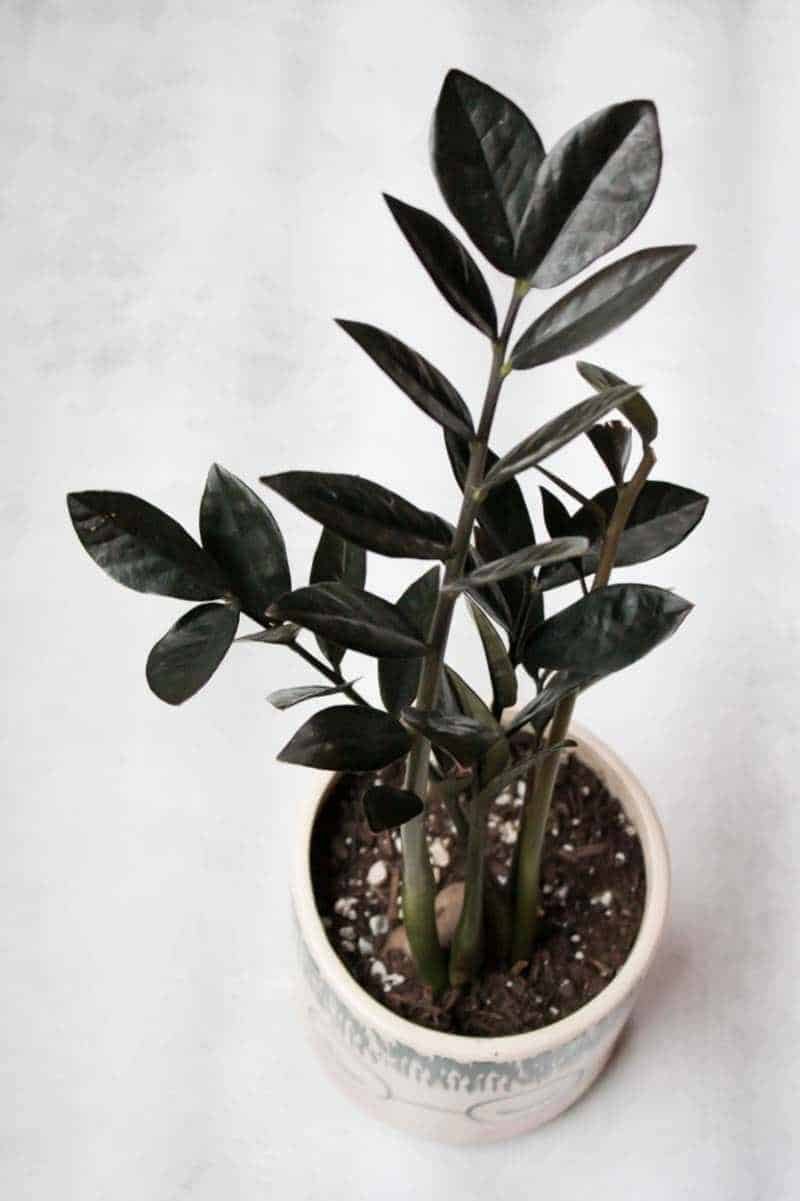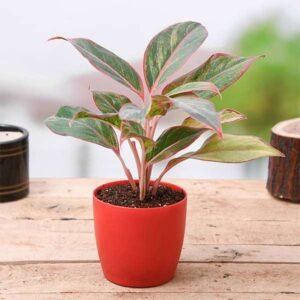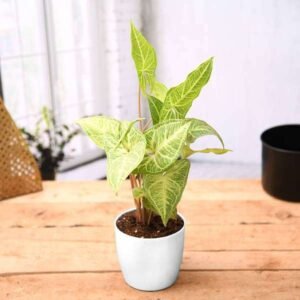Description
Zamioculcas zamiifolia (ZZ Plant): A Complete Overview
Zamioculcas zamiifolia, commonly referred to as the ZZ plant or Zanzibar Gem, is a tropical perennial native to Eastern Africa. It belongs to the Araceae family, which also includes popular houseplants like the peace lily and philodendron. Prized for its glossy green foliage, architectural beauty, and extreme tolerance to neglect, the ZZ plant has become a favorite among both novice and experienced indoor gardeners worldwide.
Origins and Natural Habitat
The ZZ plant is indigenous to arid regions of Eastern Africa, including countries like Kenya, Tanzania, and Zanzibar—hence one of its common names, the “Zanzibar Gem.” In its native habitat, it grows in dry grasslands and forests, thriving in low-light environments and surviving long periods of drought. This evolutionary adaptation makes it exceptionally well-suited to life as a houseplant, especially in less-than-ideal indoor conditions.
Botanical Characteristics
Zamioculcas zamiifolia is a rhizomatous plant, meaning it grows from thick, underground tubers (rhizomes) that store water and nutrients. These rhizomes are a key reason for its drought resistance, allowing the plant to survive extended dry spells.
The ZZ plant features upright, fleshy stems that can grow up to 2 to 3 feet tall indoors. Each stem is lined with smooth, glossy, oval-shaped leaflets that are typically a deep green color, though newer growth may appear lighter or even slightly yellowish before maturing. The leaves are waxy and have a plastic-like appearance, contributing to the plant’s ornamental appeal.
Although it rarely blooms indoors, the ZZ plant can produce small, spadix-type flowers similar to other aroids, hidden near the base of the plant. These flowers are usually insignificant in appearance and not a primary feature of the plant.
Varieties and Cultivars
While the traditional green ZZ plant is the most commonly found, several cultivars have emerged in recent years, broadening its appeal.
- Zamioculcas zamiifolia ‘Raven’ – Known for its dramatic, almost black foliage, this cultivar starts with lime-green new leaves that darken as they mature. The Raven ZZ is highly sought after for its modern, moody aesthetic.
- Variegated ZZ Plant – A rarer variety, this plant features streaks of white, yellow, or cream on its leaves. It is less common and typically more expensive due to its slow growth and propagation challenges.
Light and Environmental Requirements
One of the primary reasons for the ZZ plant’s popularity is its ability to tolerate a wide range of lighting conditions. It can survive in low-light environments, making it ideal for offices, bathrooms, and rooms with limited natural sunlight. However, it also performs well in bright, indirect light. Direct sunlight should be avoided as it can scorch the leaves.
Temperature-wise, ZZ plants prefer average indoor conditions between 65°F to 75°F (18°C to 24°C). They are not frost-tolerant and should be kept away from cold drafts or temperatures below 45°F (7°C).
Humidity is not a major concern for ZZ plants. While they originate from tropical climates, they are highly adaptable and can thrive in both dry and moderately humid indoor environments.
Watering and Soil Needs
The ZZ plant is exceptionally drought-tolerant, thanks to its rhizomes, which act as water reservoirs. It is crucial to avoid overwatering, as this is one of the few conditions that can harm or kill the plant. Allow the soil to dry out completely between waterings. During the winter months, watering frequency should be reduced even further.
Ideal soil for ZZ plants is well-draining and aerated. A standard potting mix amended with sand or perlite works well. Using a container with drainage holes is essential to prevent water from sitting at the bottom and causing root rot.
Fertilization and Growth Rate
ZZ plants are slow growers, particularly in low-light settings. During the active growing season (spring and summer), they can benefit from a balanced liquid houseplant fertilizer applied once a month. Fertilization should be avoided in fall and winter when the plant’s growth naturally slows down.
While their slow growth means they don’t require frequent repotting, ZZ plants may eventually outgrow their containers. When this happens—typically every two to three years—they can be repotted into a slightly larger pot.
Propagation
ZZ plants can be propagated through division or leaf cuttings. Division involves separating the rhizomes when repotting. Leaf propagation is a slower method but can be effective. Individual leaflets can be placed in water or soil until they develop roots and small rhizomes. Patience is key, as this process can take several months.
Common Problems and Pests
ZZ plants are relatively pest-resistant but can occasionally suffer from infestations of spider mites, aphids, or mealybugs. These pests can be managed using insecticidal soap or neem oil.
Yellowing leaves are often a sign of overwatering or poor drainage. If the plant’s leaves are curling or drooping, it may need more water. However, these symptoms should always be interpreted in context with the plant’s soil moisture and environmental conditions.
Toxicity
One important aspect to consider is that all parts of the ZZ plant are toxic if ingested. It contains calcium oxalate crystals, which can cause irritation of the mouth, throat, and digestive tract. While not typically fatal, it can lead to discomfort if consumed by pets or small children. It is advisable to keep the plant out of reach of curious animals and youngsters and to wash hands after handling it.
Aesthetic and Cultural Appeal
ZZ plants have become a staple in interior design due to their minimalist beauty and low maintenance. Their upright growth and shiny leaves add a sculptural quality to rooms, making them suitable for modern, bohemian, or tropical decor styles. Feng Shui practitioners also believe that the ZZ plant brings prosperity and good fortune, especially when placed near entrances or workspaces.
In office environments, ZZ plants are appreciated for their resilience under fluorescent lighting and irregular watering schedules. They are also known to help purify indoor air, although the extent of this benefit remains a topic of debate among scientists.
Conclusion
The ZZ plant (Zamioculcas zamiifolia) is a remarkable species that combines beauty with toughness. Whether you’re a seasoned plant collector or someone who struggles to keep greenery alive, the ZZ plant offers a low-risk, high-reward option for adding natural charm to your space. Its ability to thrive on neglect, tolerate low light, and resist most pests makes it one of the most beginner-friendly and stylish houseplants available today.






 SYNGONIUM-PLANT
SYNGONIUM-PLANT 

Reviews
There are no reviews yet.